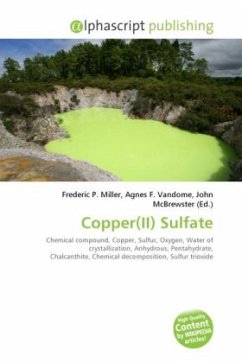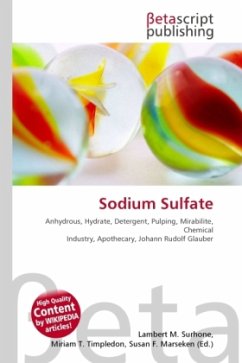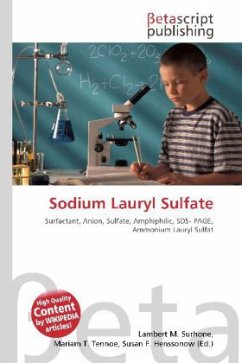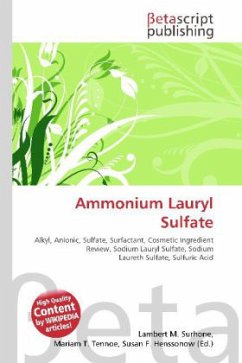
Selenate
Ion, Sulfate
Herausgegeben: Benton Zacharie, Larrie
Versandkostenfrei!
Versandfertig in 6-10 Tagen
19,99 €
inkl. MwSt.

PAYBACK Punkte
10 °P sammeln!
The selenate ion is SeO42 . Selenates are analogous to sulfates and have similar chemistry. They are highly soluble in aqueous solutions at ambient temperatures. Unlike sulfate, selenate is a somewhat good oxidizer; it can be reduced to selenite or selenium. In strongly acid conditions, hydrogen selenate ion, HSeO4 , is formed. It corresponds to the selenic acid, H2SeO4, which is a strong acid. An ion is an atom or molecule in which the total number of electrons is not equal to the total number of protons, giving it a net positive or negative electrical charge. The name was given by physicist ...
The selenate ion is SeO42 . Selenates are analogous to sulfates and have similar chemistry. They are highly soluble in aqueous solutions at ambient temperatures. Unlike sulfate, selenate is a somewhat good oxidizer; it can be reduced to selenite or selenium. In strongly acid conditions, hydrogen selenate ion, HSeO4 , is formed. It corresponds to the selenic acid, H2SeO4, which is a strong acid. An ion is an atom or molecule in which the total number of electrons is not equal to the total number of protons, giving it a net positive or negative electrical charge. The name was given by physicist Michael Faraday for the substances that allow a current to pass ("go") between electrodes in a solution, when an electric field is applied. It is from Greek , meaning "going".












